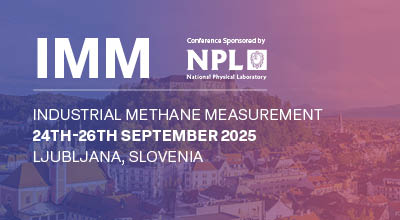| Abstract Title: | Methane Emission Localisation and Quantification at Facility Scale Using Multi-beam Open Path Laser Dispersion Spectroscopy |
| Presenter Name: | Mr Mohammed Belal |
| Company/Organisation: | MIRICO |
| Country: | United Kingdom |
Abstract Information :
Quantification and localisation of methane emissions at facility scale such as landfills, poultry farms and oil and gas facilities is important to establish effective mitigation policies. Enhancing accuracy in source attribution at shorter temporal scales supports emission reduction from industrial activities.
However, carrying out accurate quantification of emission at facility scale is not a trivial task. Given the spatial extent, time and labour consuming surveys are necessary. Punctual surveys also lack the ability to capture temporal cycles of emission a facility may exhibit that can arise from process variations and seasonal variability. Lastly, mass emission rates are sought, and confidently retrieving this information from instantaneous point concentration measurements is subject to error and biases.
We will present results from controlled release studies describing a continuous remote sensing methodology that provides high temporal resolution localisation and quantification of fugitive emissions. To carry out continuous emission monitoring over large areas, we have developed a long range mid-infrared multi beam open path analyser. Underpinning the system is the concept of Laser Dispersion Spectroscopy (LDS), a new approach to tuneable laser spectroscopy delivering unique benefits for long open-path molecular sensing. Contrary to standard absorption techniques that derive gas concentrations from measuring variations of transmitted light intensity, LDS-based instrument derives concentrations from the variation in refractive index induced by molecular resonance. This quantity is deduced from the phase variations of the detected light, which yields unique sensing benefits including immunity to transmitted intensity fluctuations, large and linear measurement dynamic range and improved molecular selectivity. Data processing into concentrations is carried out using a full physical model including error propagation to provide robust measurement error budget. LDS is particularly relevant to real world deployment for long open path sensing systems and "dirty"environments, where transmitted signals are bound to fluctuate. A 360 degree azimuth and +/-15 degree elevation scanning turret, with automatic alignment system allows the analyser to target multiple retroreflectors in the field. The multi-beam open path integrated concentrations hence measured are subsequently processed, together with meteorological data and gas dispersion models to retrieve spatial maps of mass emission rates.
The development of an LDS open-path sensor targeting atmospheric methane will be described. The principles underpinning the sensor will be presented as well as its field deployment during a campaign of controlled methane test releases. In one of the controlled field trial, the instrument is coupled with an array of 7 retroreflectors distributed in a beam fan with beam angle and beam length diversities. The spatial scans are made at a high temporal resolution (˜1s per spatial scan). A total of 17 calibrated gas releases were carried out from 2 x 2 m diffuse area sources on the ground to evaluate the instrument performance and demonstrate source mapping and quantification. The path averaged gas concentrations and uncertainties retrieved from the instrument were processed using LightSource, a new proprietary mapping solution from Shell that maps multiple emission sources and estimates their respective mass release rates. LightSource employs a Gaussian plume atmospheric eddy dispersion forward model using Bayesian statistics and Markov chain to solve the inverse gas transport problem that best explains the retrieved concentrations given wind data.
The campaign demonstrated the high level of performance of the system for precision in concentration measurement (˜20 ppbv in 100 ms over a 100 m single path), harsh weather conditions (fog, rain) and spatial scanning speed. The accurate mapping and quantification of methane sources of ˜1.2 kg/h was successfully demonstrated, even for sources outside the beam arrays, which is usually not achievable with tomographic, multi-instruments systems. Experimental configuration and results from a field demonstrations executed with the National Physical Laboratory (NPL) will be presented.

